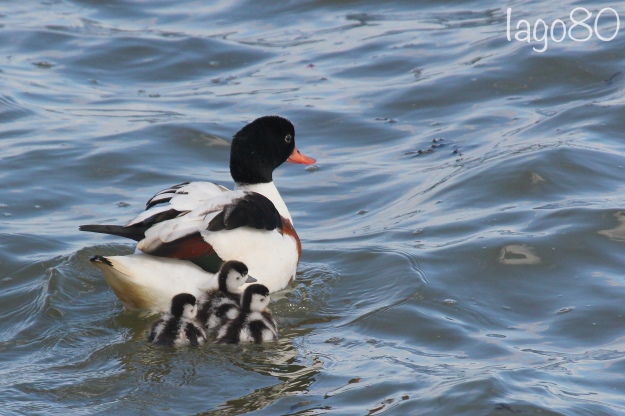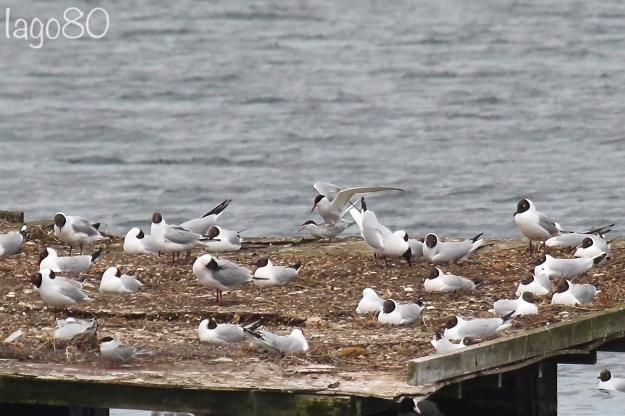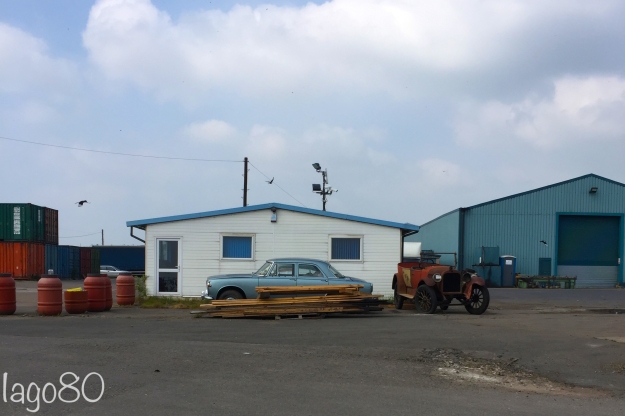Dawn on the Patch
I think I carried the scars of missing the patch Nightingale through to this long weekend. I determined that I would find good birds on the Patch and find a Nightingale somewhere. Anywhere.
And so a pretty frenetic three days of birding followed; starting, as it should, at dawn on the Patch…

Sunrise on the Wanstead Flats
Saturday morning began very early; I was up just after 5am and out shortly afterwards. The combination of the early morning light and our low-lying mist, bathes everything in gold and it reminded me why dawn is my favourite time.
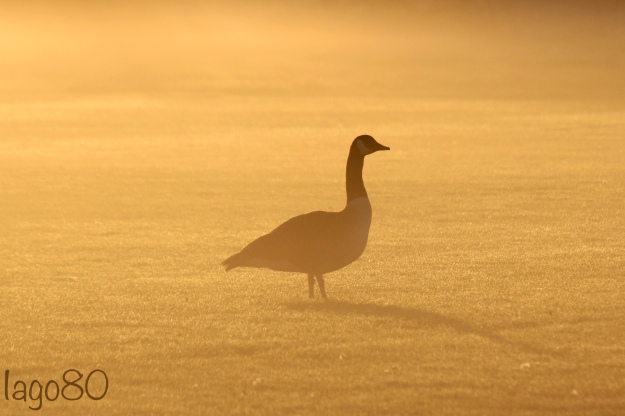
Canada Goose (Branta canadensis)
The golden light was not auspicious, however. It soon became a beautiful day, but the birding was poor. No interesting new migrants had stopped over, although there were a few
Wheatear around (it seems to be an exceptional year for them), which we had fun photographing (see
here and
here for better versions of my effort below).

Northern Wheatear (Oenanthe oenanthe)
There were, of course, other birds on the Patch, but none that whet the April appetite of listing birders.
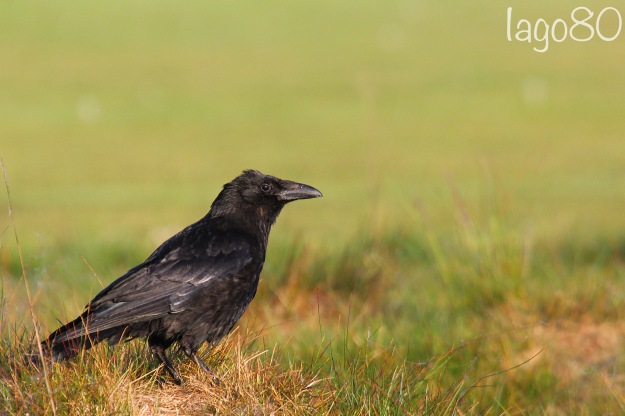
Carrion Crow (Corvus corone)
And so news of Dotterel in a field less than an hour’s drive away had me dashing for my car and promptly missing my second Sedge Warbler (which would have been a patch tick for me) in the space of week.
But I can’t complain. Sometimes we need a change of scenery and seeing Dotterel so far South is always a special occasion and it was an England tick for me, and my first ever clear views.

Female Eurasian Dotterel (Charadrius morinellus)
Two pairs showed nicely, although the relatively drab males often required re-finding due to their camouflaged plumage.

Male Dotterel
Watching Dotterel whilst the sounds of
Yellowhammer and
Corn Bunting provided a wonderful, rustic backdrop (see videos
here and
here), was, simply, special.

Corn Bunting (Emberiza calandra)

Yellowhammer (Emberiza citrinella)
On the way back, I dropped in at one of my favourite Thames-side sites, East Tilbury as I heard that both Nightingale and Grasshopper Warbler had been heard that morning. I didn’t find them, but I did enjoy some other year ticks in the form of Short-eared Owl, Cuckoo, and Whimbrel.

Whimbrel (Numenius phaeopus)

Common Cuckoo* (Cuculus canorus)

Short-eared Owl (Asio flammeus)
But even while not ticking off new birds for the year, the birding was excellent. The SSSI scrub and grassland (on the other side of the flood defences and expansive reed-beds and mudflats) are just full of migrant warblers and some very showy pairs of
Stonechat amongst other things.

Male Stonechat (Saxicola rubicola)
Also videoed calling
here.
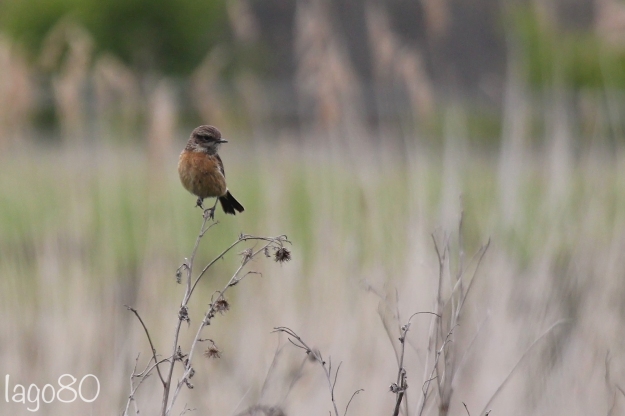
Female Stonechat
I love how easily you can get lost in the wildness of the scrub, full of birdsong, be alerted to a flock of Whimbrel calling (I had one flock, or ‘fling’ of 12 birds pass by down the Thames) and then see a 25,000 ton oil tanker pass right by. Surreal!

‘Baltic Faith’ obviously with full cargo as sitting low in the water
I then drove to the other side of the Thames and visited a friend in Canterbury for dinner and drinks. The next morning, while out walking with my friend and his dog, and… hangover aside… partially plotting my best place to find a Nightingale, I heard a … er… Nightingale.
I shouldn’t really have been surprised. Blean Woods – where we were walking – is known to hold an important population of Nightingale. I had no intention of trying to see this elusive and protected bird, but it flew right up into view (videoed singing here)…

Common Nightingale (Luscinia megarhynchos)
I even heard a second
Nightingale singing as we walked through this truly stunning ancient woodland.

English Bluebells (Hyacinthoides non-scripta) in the Blean
So instead of driving around Kent trying to find my favourite bird, I left after breakfast and got back to the Patch to tick off Whinchat for the year – a pair were showing as well as five Wheatear all lined up on the path.

Female Whinchat (Saxicola rubetra)
This morning I gave myself a lie-in, which cost me another patch-life-tick in the shape of
Rook, but I was able to get into the Brooms in time to see my first
Swift and
House Martin for the year, as well as being alerted by Jono to my first patch
Common Tern for two years with three flying very high over indeed.
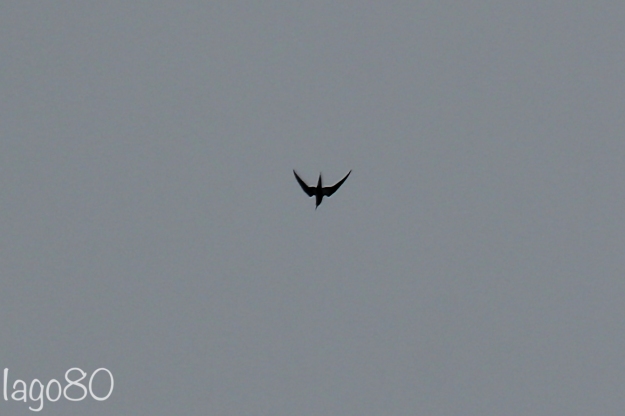
Record shot of Common Tern (Sterna hirundo)
But again, soon, the allure of more exotic birds off patch proved too magnetic and so I whipped down to Rainham Marshes where I dipped Little Stint and Curlew Sandpiper, but made up for it by getting year ticks out of Bar-tailed Godwit, and Greenshank, and a full blown London life-tick in the form of Little Gull.
Luckily I was river-watching with a couple of much younger and much better birders than me who helped locate the Little Gull on the other side of the Thames, in time for me to get my scope on it and just about get enough ‘on it’ to tick it for the year. To give you sense of how far away it was, here is the digi-scoped view (although it did look a bit better before my iPhone mashed up the pixels):

Distant Little Gull (Hydrocoloeus minutus) preening on a buoy (bill tucked into feathers)
We then had it (or a different bird??) much closer and on our side of the river. The two young guys dashed off for a photo whilst I stayed with Nick and admired it through the scope as it settled on the mud. When it looked like it was going to sleep I waddled off after the teenagers in comic pursuit. Having stopped jogging a few times due to lack of fitness and a distracting
Short-eared Owl on the adjacent marshes, I arrived too late to take its picture (according to Nick who had been watching the scene from afar, the bird ascended rapture-like vertically up in the air and out of sight!!).
This is one of the photos
Dante took of the same bird; to get an idea of what I should have been posting.

The impressive Dante had already scored big earlier in the day with a Black Tern. This grates a little as I have never seen one, apart from a ‘probable’ over Canary Wharf a couple of years ago (when I was without bins) and another, today, on the other side of the Thames that I watched for a while but couldn’t get enough on to be sure (I still maintain it was smaller, darker, and sleeker than accompanying Commons, but the better birders didn’t come to my rescue – I’m unclear as to whether they didn’t see it or whether they were stood behind me shaking their heads).
It then started raining so hard that we left the hardy young birders to it and went back via the Grasshopper Warbler bush, that was annoyingly empty of Grasshopper Warblers. Its commoner cousins were showing and sounding well across the reserve, including an unusually showy, Sedge Warbler (also videoed in song here).

Sedge Warbler (Acrocephalus schoenobaenus)
So, three days of birding, a couple of big dips on the patch, a few more off the patch, but some amazing experiences and my patch year list nudges up to 91 with four new additions, and my UK year list grows by a giddy 12 to the barely-respectable total of 137 as we enter May (Nick has seen more than that in the month of April alone, but he is properly year-listing at the moment).
Post Scriptum: a legless lizard (and no, that’s not my nickname)
I also got another lifer this weekend, in the form of a reptile in Kent.

Slow Worm (Anguis fragilis)
Which, in turn prompted me to check our own reptile mats back on the Patch:

Grass Snake (Natrix natrix)
I know this account sounds a bit like a cold ‘tick fest’, but if I had got all poetic over the experiences I had (as is sometimes my want) rather than just quickly listing things I saw, you would probably still be reading this post by the time next weekend appears.
*The photo of the Cuckoo is actually from Rainham Marshes two days after my Tilbury visit, but why allow accuracy to get in the way of narrative!












